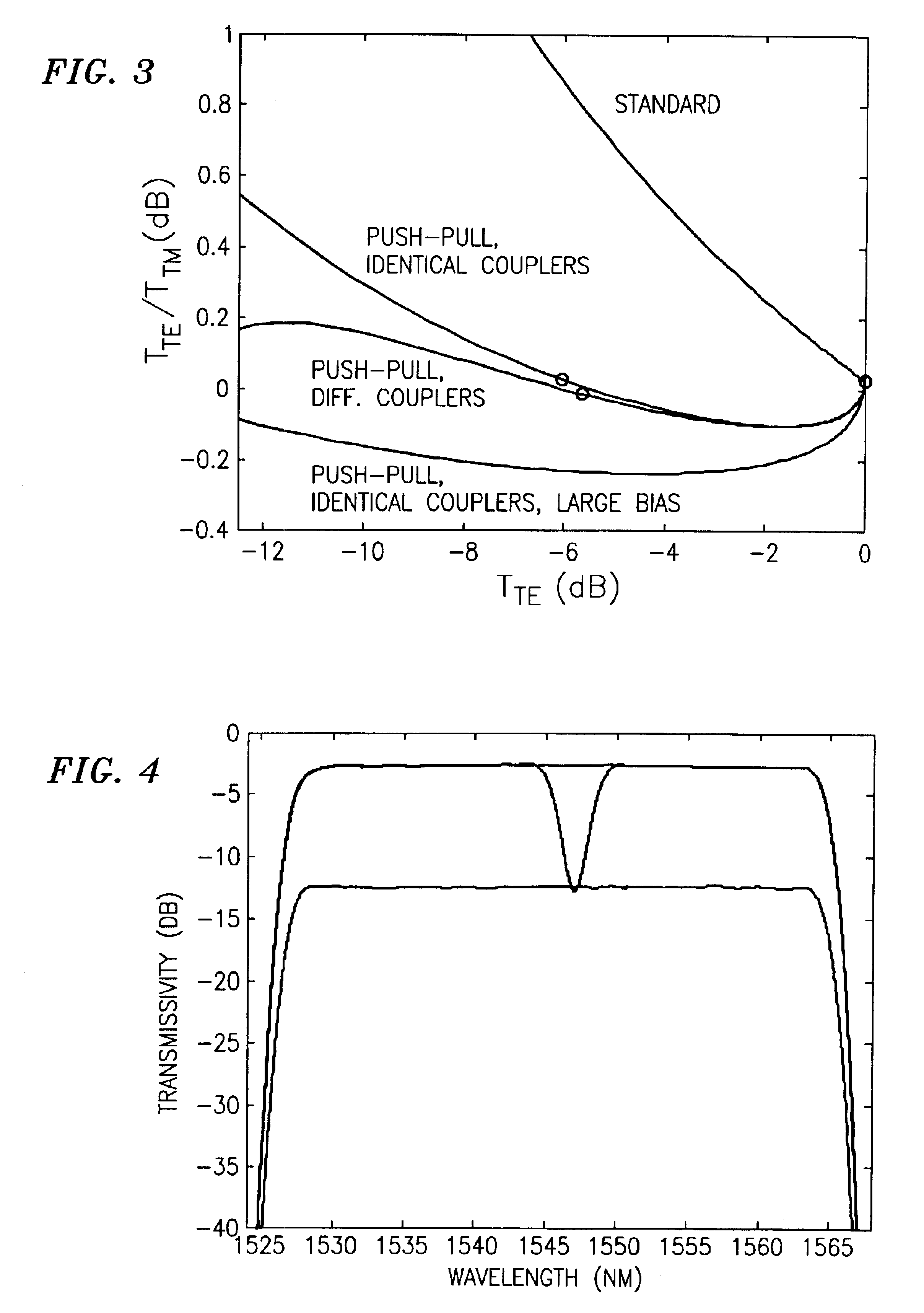Dynamic gain equalization arrangement for optical signals
a technology of optical signals and equalization arrangements, applied in the field of optical communication, can solve the problems of inconvenient design of large interferometers, inability to reduce the cost of design, and inability to make the final device loss at least 4.5 db, so as to reduce the electrical power consumption, minimize ripple, and maximize the dgef spectral resolution
- Summary
- Abstract
- Description
- Claims
- Application Information
AI Technical Summary
Benefits of technology
Problems solved by technology
Method used
Image
Examples
Embodiment Construction
[0015]Referring first to FIG. 1, there is shown a diagram of an arrangement of a DGEF in accordance with the present invention, having a push-pull Mach-Zehnder variable optical attenuator 160-1 to 160-k for each of k wavelength channels. For convenience, only attenuator 160-1 and its associated couplers are shown in detail in FIG. 1. A WDM input signal on input 101 is applied to a first waveguide grating router (WGR) 110 that includes a pair of interconnected star couplers 111 and 112. Preferably, the waveguide grating arm inlets of coupler 112 exactly fill the Brillouin zone of the lens inlets, thereby achieving “perfect spectral sampling”. This can be best accomplished by employing an exponential lens-inlet-center-wavelength spacing so that the sampling is perfect for all lens inlets, and in turn enables the k outputs of star coupler 112 to cumulatively have a ripple-free spectrum. See C. R. Doerr, M. Cappuzzo, E. Laskowski, A. Paunescu, L. Gomez, L. W. Stulz, and J. Gates, “Dynam...
PUM
 Login to View More
Login to View More Abstract
Description
Claims
Application Information
 Login to View More
Login to View More - R&D
- Intellectual Property
- Life Sciences
- Materials
- Tech Scout
- Unparalleled Data Quality
- Higher Quality Content
- 60% Fewer Hallucinations
Browse by: Latest US Patents, China's latest patents, Technical Efficacy Thesaurus, Application Domain, Technology Topic, Popular Technical Reports.
© 2025 PatSnap. All rights reserved.Legal|Privacy policy|Modern Slavery Act Transparency Statement|Sitemap|About US| Contact US: help@patsnap.com



